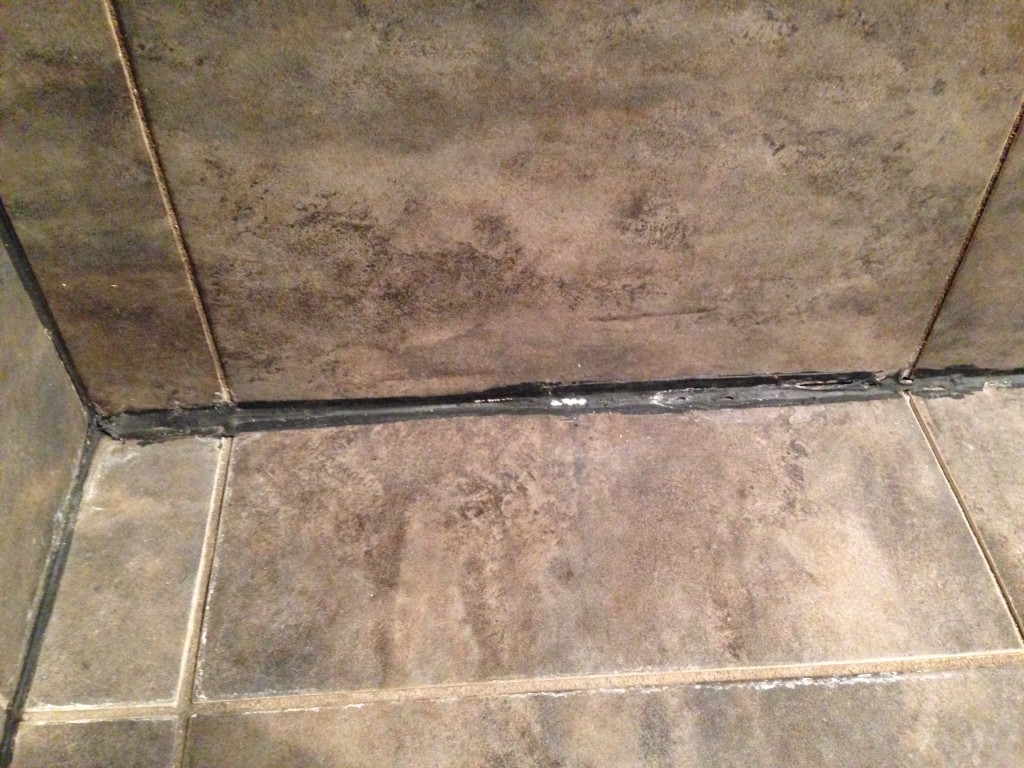Waterproofing of Wet Areas
The following information is relative to the conditions and legislation in place at the time this document was created (January 2020). If there has been any subsequent changes or amendments to the building legislation governing Waterproofing of Wet Areas in Residential Properties after January 2020, then obviously these changes would not be reflected in this information and furthermore some information may not be accurate and in line with the most up-to-date legislation in place for this reason.
In view of this, we have a legal obligation to advise you, that you must not act on the information without first making further enquiries yourself, specifically in relation to what current legislation is in place for the Waterproofing of Wet Areas at Residential Properties, in order to determine that it reflects the information we are providing in this document.
General information on Waterproofing
• Bathrooms and other wet areas are legally required to be waterproofed for all new construction, with a waterproofing system being installed, in order to reduce the risk of structural damage occurring as a result of dampness, water leaks or condensation from the wet area.
• Wet areas are defined in the National Construction Code and include areas like: bathrooms, showers, laundry and sanitary compartments. It excludes kitchens bar areas, kitchenettes and food and beverage preparation areas.
• ‘Waterproofing system’ means a combination of elements that are required to achieve a waterproof barrier including substrate, membrane, bond breakers, sealants, finishes and the like. The following materials are determined as being waterproof:
• Stainless steel
• Copper, material no less than 99.9%,
• Waterproof flexible sheet flooring with sealed joints
• Membranes meeting the requirements of the Australian standard AS: 4858
• Leakage around wet areas and the resultant material damage are one of the most common defects within residential construction and are categorised as being a Category One Defect (significant) by the Queensland Building & Construction Commission.
• Waterproofing is required to be done by a licensed QBCC contractor and certified in writing by the contractor with a form being given to the primary building contractor and Building Certifier (Form 16).
• One main component of Waterproofing involves the painting a liquid rubber membrane onto areas that are likely to see water, in order to create a kind of ‘sealed’ area. Its purpose is to help contain any water that might leak out (perhaps through failed grouting or joins, or leaky plumbing fixtures), so that it doesn’t cause any damage to materials nearby.
Key legislation for Waterproofing:
There are two main areas that govern the manner in which Waterproofing must be carried out within residential structures and these are listed below.
• Australian Standard AS:3740 – 2010 Waterproofing of Domestic Wet Areas
• National Construction Code, Part 3.8.1 ‘Wet areas and external waterproofing
Some Minimum requirements
• Waterproofing full floor within shower recess.
• At least 100mm over the hob onto the bathroom floor to be waterproofed.
• 150mm vertically up inside of shower walls.
• Vertical angle between any two walls in the shower to be waterproofed up to minimum of 1800 mm.
• Entire bathroom floor needs to be waterproofed if its timber flooring, particle board or plywood, or if it is above the ground floor of the house.
• Within the shower areas falls to drainage point of between 1:60 and 1:80.
• Floor wastes for bathroom upgrade to the waste shall be between 1:80 and 1:100.
Summary:
• All renovations of wet areas, and not just new building work, should also have Waterproofing carried out, however this is harder to enforce, as there is no formal requirement for a form to be provided to a Building Certifier for renovations of existing wet areas, as is the case for new construction of wet areas.
• Waterproofing is done during the construction of a wet area and is mostly positioned in areas not visible to the naked eye e.g. beneath the floor and wall tiles, however it is vitally important to ensure other aspects of waterproofing of a wet area are continually inspected on a regular basis with repairs carried out when deemed necessary e.g. the quality of the silicon and grout within shower recesses etc.
• Only by being vigilant can a wet area remain completely waterproof and leak free. This would also ensure that the risks of any material damage through leaks involving wet areas is also greatly reduced.
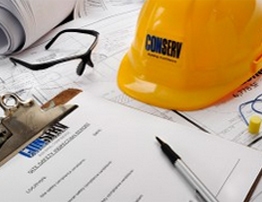
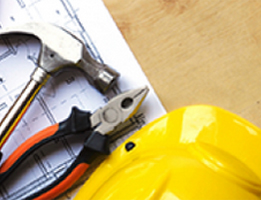


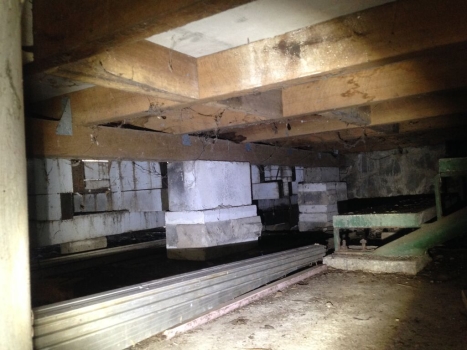


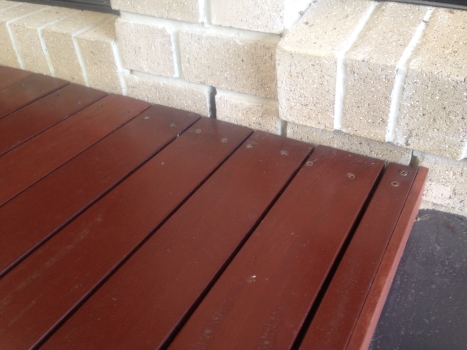
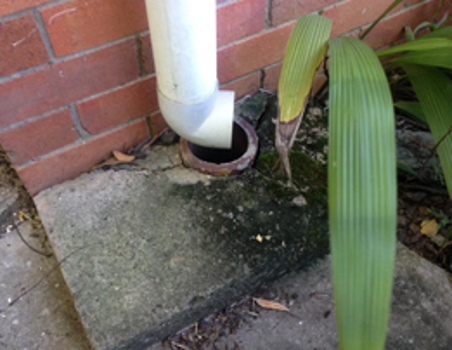 All too often during our inspections we identify areas which are conducive to the collection of retained ground moisture near a structure. Elevated moisture levels are known to provide conditions favourable to Timber Pest activity, particularly termites, and it is vital that every effort be made to avoid these risks. The most common causes of retained ground moisture are inadequate surface water drainage, downpipes not connected to drainage outlets, no gutters in place for roofing areas, outlet pipes for air conditioners, relief and overflow valves for hot water cylinders, corroding and join leakages of gutters and downpipes, defective or incomplete flashing and plumbing for rainwater tanks leaking. These are all issues which can be, and should be rectified, if they are in existence at a property.
All too often during our inspections we identify areas which are conducive to the collection of retained ground moisture near a structure. Elevated moisture levels are known to provide conditions favourable to Timber Pest activity, particularly termites, and it is vital that every effort be made to avoid these risks. The most common causes of retained ground moisture are inadequate surface water drainage, downpipes not connected to drainage outlets, no gutters in place for roofing areas, outlet pipes for air conditioners, relief and overflow valves for hot water cylinders, corroding and join leakages of gutters and downpipes, defective or incomplete flashing and plumbing for rainwater tanks leaking. These are all issues which can be, and should be rectified, if they are in existence at a property.




